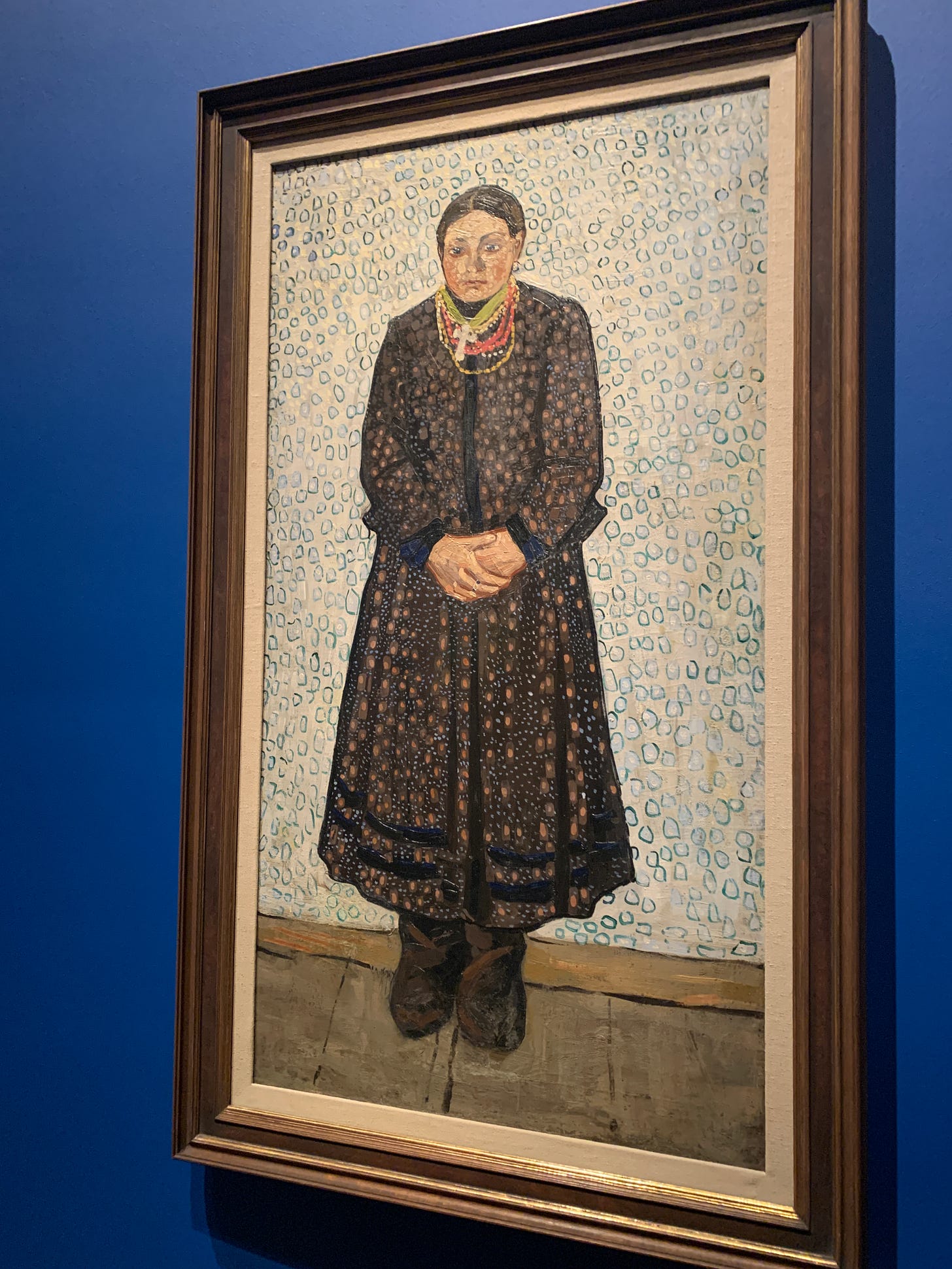Ukrainian Art of the 20C at the Royal Academy
My sincere apologies to subscribers, especially paying ones - an injury sustained two weeks ago resulting in a ruptured joint capsule and torn ligament at first metatarsal joint has had me in agony and up all night, thus unable to write.
So, belatedly, here is my next blog post. It’s a review of the excellent exhibition of 20C Ukrainian art that was hosted by the Royal Academy over the past few months. Of course the war between Russia and Ukraine made the exhibition topical. More than ever it became apparent that the Ukrainian people’s fight for independence and autonomy from its bully-boy neighbour Russia was not a new one. The paintings had to be transported via a longer route than they would have been had there not been a war, to ensure their safety.
The exhibition comprised 65 artworks, primarily from the collections of the National Art Museum of Ukraine and the Museum of Theatre, Music and Cinema of Ukraine.
The exhibition was charming if harrowing in its confirmation of a long history of brutal subjugation. Ukraine has had to fight for autonomy repeatedly throughout her history. This has led to a very particular Ukrainian culture, to distinguish it from the nations who have tried to steal their lands. It’s a culture which has strong influences from the collision of input from Russia, Poland, and the Jewish diaspora as well as the native Ukrainian tradition
Astonishingly, when Ukraine was part of the Russian and Austro-Hungarian empires at the turn of the 20C, no city in the country was allowed to have its own art academy. Instead, many artists trained in Russia - mainly from the Imperial Academy in St Petersburg. Gradually though, Ukrainian artists became curious about the burgeoning new movements developing in European cities like Paris and Munich. Here they came into contact with the new movements of the 20C: Impressionism, whereby the subject was conveyed not in full realist mode but as blurry impressions, with light predominant; Cubism, where still lives, portraits and landscapes were depicted from many angles simultaneously, as seen in the Cubist phase of Picasso or Braque; Futurism, associated with portraying movement and speed, which was very active in Russia; Pointillism, as finessed by Seurat, made up of multiple dots of colour; and so on.
But the Ukrainian influence remained. This portrait by Volodymyr Burliuk (1886-1917) is of a Ukrainian peasant woman. Although the circles in the background may have been influenced by Pointillism, and the lack of fine detail in the face by Impressionism, there is a very distinct national character about the woman in her traditional dress, and also her pose, modest and dressed for manual labour. The cross around her neck is an Orthodox one. Her necklace is made up of coral beads. The artist died young in action in WWl. His older brother was also an artist.



